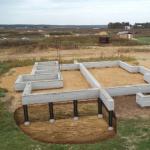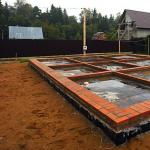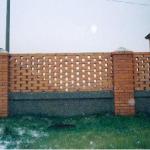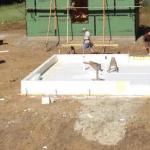Among the representatives of the plant world, there are specimens that prefer not only carbon dioxide and water as food, but also insects, as well as small animals. These are predatory plants, forced to eat like this because of the poverty of the soil where they grow. Being carnivorous, they secrete a secret similar to digestive juice, prey on arthropods and insects, dissolve them for a certain time and thus obtain the substances necessary for life. Such heterotrophic nutrition is the only way to survive in the specific climatic conditions that give them their name.
The most popular representatives of this plant world are grown as houseplants, using to control small insects at home.
The described plants are characterized by several types of traps for catching prey, while they do not belong to plant families:
- the use of leaves resembling the shape of a jug;
- leaves forming the shape of a trap;
- sticky leaves and sweet secret;
- drag traps;
- crab claw traps.
The most popular predator is the sarracenia, or, as it is called correctly, the North American insectivore. Such plants grow on the east and south coasts of North America in southeastern Canada. The leaves are shaped like a water lily and serve as a trap for insects. This is a kind of funnel, the edges of which open in the form of a hood. It protects the opening of the plant, where enzymes and juices responsible for the digestion of food are produced, from moisture. At the edges of the flower, a special secret is produced, which, with its color and aroma, “beckons” representatives of the fauna. Sitting on the edge, insects slide into the flower, intoxicated with narcotic substances, plants, where they dissolve with the help of enzymes.
Birds sometimes use sarracenia as a feeder, taking out undigested mosquitoes and flies from it. It is also grown on home windowsills. The bright raspberry color of sarracenia will add variety to the abundance of flowers, decorate any interior and help get rid of annoying insects.
These carnivorous plants also have water lily shaped leaves which act as a trap. They grow in the tropics on the territory of Eurasia, Africa, Australia and islands located in this climatic zone. The second name of this plant is "monkey cup". It was obtained during the observation of primates who drank rainwater from these flowers.

About 200 are known, most of them are high lianas, reaching a length of about 10-15 meters. Growing them at home is not very convenient, but if you choose a greenhouse with a warm climate as their place of residence, they will take root well. On the stem are leaves with a small tendril protruding from the tip, at the end of which a vessel is formed. It becomes wider at the ends, forming a small bowl. This bowl collects the liquid synthesized by the Nepenthes, which can be sticky or watery, depending on the variety of flower. Insects drown in it, and, dissolving, form the food of nepenthes. In addition to small arthropods, some representatives of this flower also use small mammals as food.
Rosyanka and Zhiryanka

Another large representative of carnivorous plants, with about 194 species. lives on all continents, except permafrost, and feels good in all climatic conditions. These carnivorous plants live for a very long time - about 50 years. Plants feed on moving glandular tentacles ending in a sticky and sweet secret. Sitting on a sweet leaf, the insect sticks, and the tentacles slowly but surely make it move towards the trap. Here, special glands absorb the insect and digest it. Sundews are used as houseplants to control small insects.
In the same way, the butterfly works, using sticky leaves to lure and eat insects. About 80 representatives of this species of carnivores are known; they grow in soils poor in minerals and salts on the American continents, in Europe and Asia. The bright green or pink leaves of the flower have special cells that produce sticky mucus. Spreading over the surface in the form of drops, it turns it into Velcro, in which the paws of insects get stuck. Other cells produce enzymes that break down food. Zhiryanka also feels great among houseplants, blooming in the summer season.
The most popular indoor carnivorous plants in our country are flycatchers. In addition to flies, midges and mosquitoes, the nutrition of this plant is enriched with spiders and ants. This is a small flower that thrives well in indoor flower pots and our climate. It has a short stem that hides underground, and four to seven leaves crowned with a head. The head consists of two plates, outwardly resembling a heart. The plates are slightly concave and long, with cilia along the edges. They form a trap. The inner surface of the heads produces a bright scarlet pigment, which synthesizes mucus and is a bait.

When an insect lands on a leaf, it touches the sensory hairs covering the tentacles, and they snap shut abruptly. This happens in a tenth of a second, so a careless fly has no chance of escaping. Cilia, quite hard and sharp, securely hold the victim. The leaves of the flower begin to grow, connecting at the edges and forming a stomach in which enzymes break down the prey.
A sufficiently developed plant capable of distinguishing living flesh from non-living. If, instead of an insect, the sensors are irritated with a foreign object, it will reflexively close its head, but after a few seconds it will open again.
Genlisea and Darlingtonia Californian
Genlisea lives in humid subtropical climates and is not suitable for home use. This is a short grass with bright yellow flowers and a claw trap. The exit from it is closed by small hairs growing towards the edges or in a spiral. Leaves located above ground level are involved in the process of photosynthesis, and underground ones serve to feed the simplest microorganisms with bacteria. In addition, underground leaves absorb moisture and perform fixing functions, because. Genlisea has no roots. The leaves form hollow spiral tubes into which microbes enter. As houseplants, it is not customary to grow a genlisee.

In the same swampy conditions, near natural springs with clean water, Darlingtonia also grows. This is a fairly rare plant that has chosen northern California as its habitat. Its leaves are bulb-shaped: a swollen ball-shaped cavity and two sharp leaves resembling drooping fangs. But although the leaves are trapping, the flower itself is used as a trap in the form of a claw. Rays of light break through the plant, which deceive the insects, forcing them to move inward. Movement occurs along thin villi that grow towards the core and prevent return.
Pemphigus and Byblis

Pemphigus is a very common carnivorous plant that grows in high humidity conditions in all parts of the world except Antarctica. Only this representative of carnivores has a trap - a bubble. These vesicles vary in size, ranging from 0.2 mm to 1.2 cm in diameter. Small bubbles are designed to catch the simplest organisms, and large ones are for larger prey. Sometimes water fleas or even tadpoles get into them. Hunting happens very quickly: when the prey is close to the bubble, it opens and sharply draws in the prey and water. If you have pemphigus as a home plant, it is better to plant it near an artificial reservoir.
Byblis is better known as the rainbow plant. Australia is considered the birthplace of this carnivorous representative of the flora, and the mucus that covers the leaves and shimmers in the sun gave it its name. Outwardly, the biblis is similar to the sundew. The flower has leaves with a round section, they are elongated, cone-shaped towards the end. They are completely covered with a slimy secret that attracts prey to the leaves and tentacles. These are wonderful indoor plants that feel comfortable at home.
Video Predatory plants
Nature never ceases to amaze us with its mysteries and surprises. It would seem that a stalk with leaves, but also carnivorous! It turns out that there is a fairly significant category of plants that live someone else's death. These are the so-called "Plutonians" - named after the mysterious lord of death and rebirth - Pluto. More common names are "carnivorous plants" and "carnivorous plants".
These plants are further proof of the mystery of evolution. For example, in order to survive in shady damp places, the so-called epiphytes move to live on a higher and more powerful neighbor, however, without harm to him; Predatory plants, according to scientists, evolved due to the extreme lack of nitrogen in the soil.
In total, about 500 species of predator plants are known. In the most famous "predators" - sundews, nepenthes and sarracenia - insects make up the bulk of the prey (hence the other name for these plants - insectivorous). Others - water bladderworts and aldrovands - most often catch planktonic crustaceans. There are also such "predatory" plants that feed on fry, tadpoles, or even toads and lizards. There are three groups of such insectivorous plants - these are plants with trap leaves, in which the halves of the leaves with teeth along the edge close tightly, plants with sticky leaves, in which the hairs on the leaves secrete a sticky liquid that attracts insects, and plants in which the leaves are shaped jug with a lid filled with water.
Why do plants "predation"?
The fact is that all carnivorous plants grow on poor soils, such as peat or sand. In such conditions, there is less competition among plants (few people are able to survive here), and the ability to catch live prey, break down and assimilate animal protein makes up for the lack of mineral nutrition. Carnivorous plants are especially numerous on moist soils, swamps and swamps, where they compensate for the lack of nitrogen at the expense of caught animals. As a rule, they are brightly colored, and this attracts insects that are used to associating bright colors with the presence of nectar.
What is characteristic of carnivorous plants?
They have various devices for trapping small animals, mainly insects and arachnids, digest their victims with the "digestive juice" secreted by special glands, and absorb the resulting nutritious slurry, thus supplementing the nitrogen they need, obtained from the soil, with nitrogen from animal tissues. Leaves are usually turned into insect trapping organs. They are covered with glue, carry sticky hairs, can be bent inward, closing like a palm gathered into a fist. The leaf can be turned into a jar with a lid, from which an insect that has entered it cannot escape.
There is reason to believe that some cultivated plants are not averse to eating "meat". So, rainwater accumulates in the bases of pineapple leaves, and small aquatic organisms multiply there - ciliates, rotifers, worms, insect larvae. There are suspicions that pineapple is able to digest and assimilate them.
Zhiryanka
It acts almost the same as the sundew, luring insects with sticky secretions of its long, tapering leaves, collected in a rosette. Sometimes the edges of the leaves are bent inward, and the prey in such a tray is locked. Other leaf cells then secrete digestive enzymes. After the "dish" is consumed, the leaf unfolds and is ready to act again.
Venus flytrap
The genus Dionaea includes only one species, Dioneae muscipulata, better known as the Venus flytrap. This is the only plant in which the capture of insects by the rapid movement of the trap can be observed even with the naked eye. In nature, the flycatcher is found in the swamps of North and South Carolina.
In an adult plant, the maximum size of the trap is 3 cm. Depending on the season, the type of trap changes markedly. In summer, when there is a lot of prey, the trap is brightly colored (usually dark red) and reaches its maximum size. In winter, when there is little prey, the traps decrease in size. Along the edges of the leaf are thick spines, similar to teeth, each leaf ("jaw") is equipped with 15-20 teeth, and in the middle of the leaf there are three sentinel hairs. An insect or other creature attracted by a bright leaf cannot but touch these hairs. The collapse of the trap occurs only after a double irritation of the hairs in the range from 2 to 20 seconds. This prevents the traps from triggering when it rains.
It is no longer possible to open the trap. If the leaf misses or something inedible gets into it, it will reopen in half an hour. Otherwise, it will remain closed until it has digested the prey, which can take up to several weeks. As a rule, the leaves, before dying off and being replaced by new ones, work in this way only two or three times.
Nepenthes
The genus includes about 80 plant species from tropical rainforests. Most of them are lianas, reaching several meters, but there are also low shrubs. Nepenthes traps are adapted to capture very large prey. The largest Nepenthes can also catch small rodents, toads and even birds. However, their usual prey is insects.
Nepenthes catch prey in a completely different way than all other predatory plants. In their tubular leaves, shaped like pitchers, rainwater accumulates. In some, the tip of the leaf is folded like a funnel, through which water flows inward; in others, it is folded over and covers the opening, limiting the amount of incoming moisture to prevent overflow in heavy rains. On the outer side of the jug, two toothed wings run from top to bottom, which serve both to support the jug and to guide crawling insects. Along the inner edge of the jug are cells that secrete sweet nectar. Beneath them are many hard hairs, turned downwards, a bristly palisade that does not allow the victim to get out of the jug. The wax secreted by the cells of the smooth leaf surface of most Nepenthes makes this surface so slippery that no claws, hooks or suckers can help the victim. Once in such a jar-trap, the insect is doomed, it sinks deeper into the water - and drowns. At the bottom of the jug, the insect decomposes, and its soft parts are absorbed by the plant.
Nepenthes (pitchers) are sometimes called "hunting cups", since the liquid contained in them can be drunk: clean water is in the top of the jug. Of course, somewhere below are the undigested solid remains of the "dinners" of the plant. But with a certain caution, they cannot be reached, and almost every jug contains a sip or two, or even a lot more water.
Sarracenia
The genus includes 9 species from the Sarraceniaceae family. All members of the family are marsh plants. The flowers are very bright. And even non-flowering sarracenia attract attention: emerald, with a dense network of raspberry veins, trap leaves flowing with sweet juice resemble fabulous flowers. Attracted by a bright trap, insects sit on the trap and die.
Darlingtonia (Darlingtonia)- a swamp plant in North America, one of the strangest in the world: it amazes with its jugs in the form of a cobra hood, preparing for an attack (hence the other name - Cobra Plant). Insects are caught by smell, and the hairs on the walls of the leaves provide only downward movement.
In Australia you can find Byblis Giant (Byblis gigantea), completely covered with leaves with sticky hairs and glands with a very sticky substance. It is about him that rumors still circulate as a man-eating plant. According to legends, the remains of people have been found near these plants more than once. The local natives used its leaves as super glue.
domestic predators
There is an opinion that predator plants cannot be kept at home. Indeed, they most often die after a while, however, there are types of predator plants that are most suitable for indoor conditions. These are the Venus flytrap, various sundews, medium-sized species of Nepenthes, tropical species of butterflies and most species of sarracenia.
Venus flytrap is grown in coarse fibrous peat. The plant requires maximum sunlight throughout the year, and in winter, when there is not enough sunlight, the plants have to be highlighted. It is watered abundantly in the summer, it is even better to keep pots with plants a third submerged in water, using boiled or rain water for irrigation. In winter, watering is reduced, but the soil is not allowed to dry out completely. Requires high humidity.
Growing individual hybrid species of non-penthes is not difficult, with the only caveat that they require constant high humidity to form jugs. Nepenthes are grown on soil consisting of fibrous peat and sphagnum moss or on pure sphagnum moss. The main thing is that the soil is always loose and well aerated. Water these plants should be plentiful and soft water, avoiding the slightest drying.
Many representatives of sundews are very difficult to keep in room conditions. However, some tropical species of sundews are very unpretentious and can grow in aquariums with high air humidity, as their leaves are very delicate and dry out easily in a dry room atmosphere. The most suitable for growing indoors are the South African sundew Drosera alicia and the American sundew Drosera capillaris (this is the most hardy sundew).
Sarracenia grow beautifully in a room without much care. The soil mixture should be loose and not nutritious: washed quartz sand, chopped sphagnum and high peat (1:2:3) with the addition of pieces of charcoal. Sarracenia often suffer from waterlogging, so they need good drainage. Watering - distilled or clean snow (rain) water. The best place for them in the apartment is a window sill, best of all under a constantly ajar window, wintering at t 10-15 ° C.
The Venus flytrap is very fond of children and adults, they put their fingers in it and watch how the small soft mouth closes. The surprising fact is that the reaction rate is only one-thirtieth of a second! This plant also knows how to play the game "edible-inedible", and if the food is suitable, then the leaf will open again only after 6-10 days. But if the leaf slammed shut in vain, then after 1-2 days the flycatcher will again go hunting.
It is the Venus flytrap that is most often bred at home and begin to feed. Caught flies are also suitable, and even small pieces of ordinary meat. Therefore, if such an exotic has settled in your house, setting the meat table, do not forget to invite your green friend to him.
There are many strange plants in the world, but the most strange, perhaps, are predator plants. Most of them feed on arthropods and insects, but there are those who do not refuse a piece of meat. They, like animals, secrete a special juice that helps to break down and digest the victim, receiving the necessary nutrients from it.
Some of these carnivorous plants can be grown at home. Which ones and what they are, we will tell further.
Sarracenia (Sarracenia)

The natural habitat of this plant is the east coast of North America, but today it is also found in Texas and southeastern Canada. Sarracenia catches its victims with leaves in a flower, which has the shape of a jug with a deep funnel and a small hood over the hole. This appendage protects the funnel from rainwater, which can dilute the digestive juices inside. It contains various enzymes, including protease. Along the edge of a bright red water lily, juice is released, which resembles nectar in aroma. This trap plant attracts insects. Sitting on its slippery edges, they do not hold on, fall into the funnel and are digested.
Important! Today, there are more than 500 species of similar plants in different parts of the world. Most of them grow in South America, Australia, Africa. But all of them, regardless of species, use one of five methods of catching prey: a flower in the form of a jug, leaves closing like a trap, sucking traps, sticky traps, a crab claw trap.
Nepenthes (Nepenthes)
Tropical plant that feeds on insects. It grows in the form of a creeper, growing up to 15 meters in length. Leaves form on the vine, at the ends of which one tendril grows. At the end of the tendril, a jug-shaped flower eventually forms, which is used as a trap. By the way, this natural bowl collects water that monkeys drink in their natural habitat. For this, it received another name - "monkey cup"
 The liquid inside a natural cup is a little sticky, sometimes just liquid. Insects simply drown in it, and then are digested by the plant. This process takes place in the lower part of the bowl, where special glands are located for the absorption and redistribution of nutrients.
The liquid inside a natural cup is a little sticky, sometimes just liquid. Insects simply drown in it, and then are digested by the plant. This process takes place in the lower part of the bowl, where special glands are located for the absorption and redistribution of nutrients.
Did you know? The famous naturalist Carl Linnaeus, who in the 18th century created the system of classification of wildlife that we still use today, refused to believe that such a thing was possible. After all, if the Venus flytrap really devours insects, it violates the order of nature, instituted by God. Linnaeus believed that plants catch insects by chance, and if the unfortunate insect stops twitching, it will be released.Plants that feed on animals cause us inexplicable anxiety. Probably, the fact is that such an order of things contradicts our ideas about the universe.
This insectivorous plant has about 130 species that grow mainly in the Seychelles, Madagascar, the Philippines, as well as in Sumatra, Borneo, India, Australia, Indonesia, Malaysia, and China. Basically, plants form small traps and feed only on insects. But varieties such as Nepenthes Rajah and Nepenthes Rafflesiana do not disdain small mammals. This meat-eating flower quite successfully digests mice, hamsters and medium-sized rats.
Carnivorous plant Genlisea (Genlisea)
This delicate, at first glance, herb grows mainly in South and Central America, as well as in Africa, Brazil and Madagascar. The leaves of many species of the plant, of which there are more than 20, secrete a thick gel to attract and hold prey. But the trap itself is in the soil, where the plant lures insects with attractive scents.  The trap is a hollow spiral tube that releases the fermented liquid. They are covered with villi on the inside, directed downward from the exit, which does not allow the victim to get out. The tubes also act as the roots of the plant. From above, the plant has neat photosynthetic leaves, as well as a flower on a stem about 20 cm. Depending on the species, the flower may have a different color, but yellow shades predominate. Although genlisea belongs to insectivorous plants, it feeds mainly on microorganisms.
The trap is a hollow spiral tube that releases the fermented liquid. They are covered with villi on the inside, directed downward from the exit, which does not allow the victim to get out. The tubes also act as the roots of the plant. From above, the plant has neat photosynthetic leaves, as well as a flower on a stem about 20 cm. Depending on the species, the flower may have a different color, but yellow shades predominate. Although genlisea belongs to insectivorous plants, it feeds mainly on microorganisms.
Darlingtonia Californian (Darlingtonia Californica)
Only one plant is assigned to the genus Darlingtonia - California Darlingtonia. You can find it in the springs and swamps of California and Oregon. Although it is believed that this rare plant prefers running water. The trap is the red-orange leaves of the plant. They have the shape of a cobra's hood, and on top of it is a light green jug, from the end of which two leaves hang. The jug, where insects are lured by a specific aroma, has a diameter of 60 cm. Villi grow inside it towards the digestive organs. Thus, the insect that got inside has only one way - into the depths of the plant. It cannot return to the surface. 
Pemphigus (Utricularia)
The genus of these plants, which includes 220 species, got its name from the huge number of bubbles from 0.2 mm to 1.2 cm, which are used as a trap. The bubbles have negative pressure and a small valve that opens inward and easily sucks insects into the middle along with water, but does not let them out. The plant feeds on both tadpoles and water fleas, as well as the simplest unicellular organisms. The plant has no roots because it lives in water. Above the water releases a peduncle with a small flower. Considered the world's fastest carnivorous plant. It grows on moist soil or in water everywhere except Antarctica. 
Zhiryanka (Pinguicula)
The plant has bright green or pink leaves covered with a sticky liquid that lures and digests insects. The main habitat is Asia, Europe, North and South America.
Important! Today, the popularity of carnivorous houseplants has increased so much that botanists keep secret the places where such plants were found. Otherwise, they are immediately ruined by poachers who are engaged in illegal mining and trade in insectivorous plants.
The surface of the leaves of the oilwort has two types of cells. Some produce a slimy and sticky secretion that appears on the surface in the form of drops. The task of other cells is the production of special enzymes for digestion: esterases, proteases, amylase. Among the 73 plant species, there are those that are active all year round. And there are those who “fall asleep” for the winter, forming a dense, non-carnivorous rosette. When the ambient temperature rises, the plant releases carnivorous leaves. 
Sundew (Drosera)
One of the most beautiful house plants-predators. In addition, it is one of the largest genera of carnivorous plants. It includes at least 194 species that can be found in almost every corner of the world, except for Antarctica.  Most species form basal rosettes, but some species produce vertical rosettes up to a meter in height. All of them are strewn with glandular tentacles, at the ends of which are droplets of sticky secretions. The insects attracted by them sit on them, stick, and the socket begins to roll up, closing the victims in a trap. Glands located on the surface of the leaf secrete digestive juice and absorb nutrients.
Most species form basal rosettes, but some species produce vertical rosettes up to a meter in height. All of them are strewn with glandular tentacles, at the ends of which are droplets of sticky secretions. The insects attracted by them sit on them, stick, and the socket begins to roll up, closing the victims in a trap. Glands located on the surface of the leaf secrete digestive juice and absorb nutrients.
Byblis (Byblis)
Byblis, despite its carnivorous nature, is also called the rainbow plant. It comes from Northern and Western Australia, and is also found in New Guinea on swampy moist soils. It grows as a small shrub, but sometimes can reach 70 cm in height. It produces beautiful flowers of purple hues, but pure white petals are also found. Inside the inflorescence there are five curved stamens. But a trap for insects are leaves with a round section, dotted with glandular hairs. Like sundews, they have a slimy sticky substance at the ends to lure victims. Similarly, there are two types of glands on leaves: those that secrete bait and those that digest food. But, unlike sundew, biblis does not secrete enzymes for this process. Botanists are still arguing and researching about the digestion of food by a plant. 
Aldrovanda vesiculosa (Aldrovanda vesiculosa)
When amateur flower growers are interested in the name of a flower that eats insects, they rarely find out about Aldrovanda vesicularis. The fact is that the plant lives in water, has no roots, and therefore is little used in home breeding. Feeds mainly on crustaceans and small aquatic larvae.  As traps, it uses filiform leaves up to 3 mm in length, which grow in 5-9 pieces along the circumference of the stem along its entire length. Wedge-shaped petioles filled with air grow on the leaves, which allows the plant to stay close to the surface. At their ends are cilia and a bivalve plate in the form of a shell, covered with sensitive hairs. As soon as they are irritated by the victim, the leaf closes along, grabbing it and digesting it.
As traps, it uses filiform leaves up to 3 mm in length, which grow in 5-9 pieces along the circumference of the stem along its entire length. Wedge-shaped petioles filled with air grow on the leaves, which allows the plant to stay close to the surface. At their ends are cilia and a bivalve plate in the form of a shell, covered with sensitive hairs. As soon as they are irritated by the victim, the leaf closes along, grabbing it and digesting it.
The stems themselves reach a length of up to 11 cm. Aldrovand grows rapidly, adding up to 9 mm per day in height, forming a new curl every day. However, as it grows at one end, the plant dies at the other. The plant produces solitary small white flowers.
Surely many have heard of flowers that eat animals and insects. To date, science knows about several hundred such plants. To characterize them, terms such as "carnivorous flowers" or simply "carnivorous plants" are used. Most of them feed on small insects, but there are specimens that can even digest a frog.
There are houseplants that feed on insects. Fans of predatory flowers claim that their pet is excellent at fighting mosquitoes and flies, significantly reducing the population.
What are these plants and why did they become insectivorous?
Such flowers can be found on all continents except Antarctica. Most of them are herbaceous perennials. They belong to two families- Bubbly and Rosyankovye. Plant predators are also found on the territory of the CIS countries. Some of them, for example, alpine butterwort, are listed in the Red Book of their countries.
These plants eat insects. steel in the process of evolution. Most of them settle on poor soils where there is a lack of nitrogen and other vital substances. Thus, eating insects, they get the necessary nutrition. In the process of evolution, the ability to digest animal protein was developed, and the flowers themselves acquired a lot of qualities that could attract attention. Many of these plants have a smell that insects associate with honey nectar, and they use the peculiar color of leaves and flowers as a distraction.
There are predators in which the inflorescence grows in the form of a water lily. In it, as in a bowl, water is collected during the rain, and for a long time it remains in excellent condition. Attracted by the opportunity to drink water, the unfortunate insects sit on the petal and slide down to the bottom of the bowl. After the victim drowns, the juice of the plant enters the process, which in its action resembles gastric juice.
The process of capturing a gullible insect as follows. As soon as a bee or butterfly sits on the petals, hairs with enzymes enter the hunting process. The structure of the petal has a lot of traps that can securely hold the insect and it is almost impossible to escape from the bait. Special enzymes containing poison kill the victim, and the juices from his body flow into the tissues of the plant. Only a chitinous shell remains from the insect, which is not digested.
Nevertheless, protein food for predators is only a source of trace elements missing in the soil, because photosynthesis remains the main food.
carnivorous plants
There are about a hundred thousand plants that eat insects in the world. Consider the most famous of them.
Genlisey
 The habitat of Genlisei is South America and Africa. The herbaceous plant has traps in the form of a spiral. Thanks to the villi inside the trap, the insect is held back for the further absorption process. It is noteworthy that only those leaves that grow below, along the surface of the earth, are carnivorous. They just feed on small insects and protozoa, acting as roots, while the upper leaves are absolutely safe.
The habitat of Genlisei is South America and Africa. The herbaceous plant has traps in the form of a spiral. Thanks to the villi inside the trap, the insect is held back for the further absorption process. It is noteworthy that only those leaves that grow below, along the surface of the earth, are carnivorous. They just feed on small insects and protozoa, acting as roots, while the upper leaves are absolutely safe.
darlingtonia
Unusual insectivorous plant in the form of a bulb. In the process of evolution, it formed sharp petals in the form of animal fangs. Darlingtonia uses a special claw for hunting. Outwardly, it looks like an asymmetrical flower. with villi inside. An insidious predator uses its own color scheme to lure the prey, which confuses the insect with the help of bright spots on the surface.
Insectivorous plants with water lily traps
- Nepenthes.
- Cephalotus Saccular.
- Sarracenia.
Nepenthes
 He, like many insectivorous plants, has petals in the form of a water lily. There are at least one hundred and twenty species of this plant. Some of them are quite large and can even eat small mammals, such as mice. Nepenthes is widely distributed in Asia, Australia and India. Monkeys use this flower as a source of water.. Because of what the natives called Nepenthes "monkey bowl". It grows in the form of a vine with a small root system.
He, like many insectivorous plants, has petals in the form of a water lily. There are at least one hundred and twenty species of this plant. Some of them are quite large and can even eat small mammals, such as mice. Nepenthes is widely distributed in Asia, Australia and India. Monkeys use this flower as a source of water.. Because of what the natives called Nepenthes "monkey bowl". It grows in the form of a vine with a small root system.
In bucket-shaped flowers, water is constantly present. Insects that sit on a water lily simply drown in it, and then the gastric juice of the plant enters the process.
Cephalotus sacculus
Large strong water lilies with teeth on the edges attract insects with a specific smell. The very surface of the water lilies is smooth and the victim easily slips to the bottom of the inflorescence, from which it is no longer possible to get out. Most often, large tropical ants become victims.
Sarracenia
 You can meet her only in the northern United States and Canada. Carnivorous Sarracenia catches its prey with the help of water lily inflorescences. On the petals, which are reliably protected from moisture, digestive juice is formed. It also attracts insects with its specific smell, reminiscent of nectar. Sitting on the surface petal, the victim is paralyzed by the instantly released narcotic poison.
You can meet her only in the northern United States and Canada. Carnivorous Sarracenia catches its prey with the help of water lily inflorescences. On the petals, which are reliably protected from moisture, digestive juice is formed. It also attracts insects with its specific smell, reminiscent of nectar. Sitting on the surface petal, the victim is paralyzed by the instantly released narcotic poison.
Insectivorous plants that live in water
- Suction bubble.
- Bubble Aldrovanda.
These predators prefer to live in swampy areas where there is a lot of food for them in the form of mosquitoes and swamp flies.
Sucking Bubble
 This insectivorous plant can be found in many parts of our planet. It is not, perhaps, only in the Far North. With the power of bubbles that are hollow inside, the bubble sucks its prey. Since the plant lives in water, water fleas and tadpoles become its prey. The process of catching prey is very fast and efficient. A small vacuum cleaner tries to suck up everything that floats by with water, and then releases it, leaving everything you need for itself.
This insectivorous plant can be found in many parts of our planet. It is not, perhaps, only in the Far North. With the power of bubbles that are hollow inside, the bubble sucks its prey. Since the plant lives in water, water fleas and tadpoles become its prey. The process of catching prey is very fast and efficient. A small vacuum cleaner tries to suck up everything that floats by with water, and then releases it, leaving everything you need for itself.
Bubbly Aldrovanda
It lives in water, and prefers swampy areas where there are a lot of insects and tadpoles. . filamentous stems, which are in the water, form a dense growth. The setae are elongated, and there are swellings on the crustacean plates. Thanks to these swellings, Aldrovanda feels the victim and instantly collapses it. The process of digestion takes longer, at the end of which only the shell remains from the insect.
Most predatory plants prefer to catch their prey with a sticky surface.
Sticky Fatty
 Its method of catching is similar to sticky tape, which until recently was used in every house against flies. The leaves of the oilseed have a pleasant pink, and in some places, a bright green color. With the help of cells capable of digesting animal food, the plant attracts insects, since the smell emanating from the trunk reminds them of nectar. Sitting on a sticky surface, the victim can no longer take off and becomes food for the flower. There are species that hibernate and hide in a dense rosette throughout the winter months.
Its method of catching is similar to sticky tape, which until recently was used in every house against flies. The leaves of the oilseed have a pleasant pink, and in some places, a bright green color. With the help of cells capable of digesting animal food, the plant attracts insects, since the smell emanating from the trunk reminds them of nectar. Sitting on a sticky surface, the victim can no longer take off and becomes food for the flower. There are species that hibernate and hide in a dense rosette throughout the winter months.
Byblis rainbow
Outwardly, this Australian predator similar to sundew, but in fact the plant is a special kind of carnivorous flora. The rounded leaves have hairs that secrete a pink mucus of a very aggressive action. Cute flowers are painted with all the colors of the rainbow, and inside the inflorescence there are large stamens. The victim, after sitting on a flower, sticks to it tightly.
Venus flytrap
 A small carnivorous plant with a thick stem and pretty white flowers is happy to breed in home greenhouses. It has no more than four leaves on each stem. The victim, falling on the leaf of a predator, slams into a trap, after which gastric juice enters the process. The leaves flatten and thicken, increasing in volume. If the victim is large, then it takes at least a week to digest it. The bait, like many predators, is the mucus secreted by the leaf.
A small carnivorous plant with a thick stem and pretty white flowers is happy to breed in home greenhouses. It has no more than four leaves on each stem. The victim, falling on the leaf of a predator, slams into a trap, after which gastric juice enters the process. The leaves flatten and thicken, increasing in volume. If the victim is large, then it takes at least a week to digest it. The bait, like many predators, is the mucus secreted by the leaf.
A small plant with thin sticky leaves are considered a real glutton among other plant predators. In one day, the Lusitanian Rosolit can catch and digest up to thirty large insects. He lures them with the help of a sweet sticky mass released on the surface of the leaf.
Insectivorous plants in the house
 Recently, among fans of home vegetation, growing insectivorous flowers at home has become very popular. You won’t surprise anyone with such exotic things as the Venus flytrap or Sarracenia. People are attracted by everything bright, unusual and dangerous. Someone gets predatory animals or poisonous reptiles, and some of all the inhabitants of the aquarium prefer piranhas. Flower growers are not far behind.
Recently, among fans of home vegetation, growing insectivorous flowers at home has become very popular. You won’t surprise anyone with such exotic things as the Venus flytrap or Sarracenia. People are attracted by everything bright, unusual and dangerous. Someone gets predatory animals or poisonous reptiles, and some of all the inhabitants of the aquarium prefer piranhas. Flower growers are not far behind.
What is needed for a predator plant I felt great in a city apartment.

Carnivorous plants are quite widespread throughout the world. In nature, there are 450 species of similar plants, which are combined into six families. Insects form the basis of their diet, therefore carnivorous plants are often also called insectivorous.
Carnivorous plants are a miracle of nature. They are remarkably adapted to life in places characterized by a lack of nutrients in the soil. These plants have become predators! The need for survival requires them to be able to catch live prey.
Carnivorous plants obtain food in five ways. Some of them use pitcher-shaped trap leaves, others use sticky traps, the next use crabs like traps, the fourth use suction traps, and the fifth use flapping leaves.
Carnivorous plants have "developed" many ways to lure insects. For example, in some predatory plants, the edges of the trapping leaves have a bright red color, while in others, the inner walls of the leaf secrete a sugary substance that attracts insects.
Venus flytrap 
The most famous of the carnivorous plants is the flycatcher (Dionaea muscipula), but its Russian-language name is the Venus flytrap. According to one version, this plant predator was named after the Roman goddess because its trap leaves are shaped like a female genital organ.
The trap itself is located on a short stem and outwardly resembles an open shell of mollusks. Along the edges of the flaps there is one row of teeth, comparable to long eyelashes. However, all this is just an entourage, while the real weapons are glands and trigger hairs. The glands are located along the inner side of the teeth-eyelashes and secrete a sweet-smelling nectar, which is so difficult for insects to pass by. When the victim crawls inside the trap, triggers come into play - they react to touch. The trap does not close immediately, only a few consecutive touches to the triggers (and there are three of them on each leaf) are able to close the trap. Dionea, having received an insect in her trap, begins the process of digestion. The same glands that produced nectar begin to secrete abundant digestive juice, in which the insect drowns. It usually takes several days to digest, after which the valves open again, revealing to the world only the chitinous shell of the victim.
Sundew 
The round-leaved sundew (Drosera rotundifolia) is practically the only carnivorous plant growing on the territory of the former Soviet Union. It is found mainly in the northern and central regions of our country. The photo shows that it owes its name to small droplets of sticky liquid that are on the hairs that cover the leaves of this plant. These droplets glisten in the sun and are very similar to dew. It is in them that the digestive enzyme lies, which allows the sundew to digest insects, and thus receive the necessary nutrition even on poor peat soils.
It is very interesting to watch how the sundew catches insects. Unlike the Venus flytrap, the sundew does not close its trap. And the point here again is in the droplets covering the leaves. They are sticky enough to deter an insect that has had the imprudence to be seduced by the sweet fragrance of this plant.
After the insect has stuck, the leaf begins to slowly roll up, surrounding its victim with more and more transparent sticky liquid. After the complete folding of the leaf, the process of digestion begins, which usually takes several days. After this process is completed, the leaf unfolds and is again covered with droplets.
Nepenthes 
Spectacular and original pitcher belongs to the genus Nepenthes (Nepenthes), which includes several dozen species of plants of the Nepenthaceae family. The unusual shape of this flower immediately attracts attention. Even after seeing a photo of Nepentes just once, you can fall in love with him completely and irrevocably. But its main feature is that Nepenthes is a predator flower. Its attractive brightly colored jugs contain a liquid that allows the flower to be digested and used as insect food.
Sarracenia 
Sarracenia, or the North American carnivorous plant, is a genus of carnivorous plants that are found in areas of the east coast of North America, in Texas, in the Great Lakes, in southeastern Canada, but most are found only in the southeastern states.
This plant uses water lily-shaped traps as a trap. The leaves of the plant have developed into a funnel with a hood-like formation that grows over the opening, preventing rainwater from entering, which can dilute the digestive juices. Insects are attracted to color, smell, and secretions like nectar at the edge of a water lily. The slippery surface and the drug that surrounds the nectar encourage insects to fall inward, where they die and are digested by protease and other enzymes.
darlingtonia 
Darlingtonia Californian is the only member of the Darlingtonia genus that grows in northern California and Oregon. It grows in swamps and springs with cold running water and is considered a rare plant.
Darlingtonia leaves are bulbous and form a cavity with a hole under a balloon-like structure and two sharp leaves that hang down like fangs.
Unlike many carnivorous plants, it does not use trapping leaves to trap, but uses a crab claw-type trap. Once the insect is inside, they are confused by the flecks of light that pass through the plant. They land in thousands of dense, fine hairs that grow inwards. Insects can follow the hairs deep into the digestive organs, but cannot go back.
Genlisey 
Genlisea consists of 21 species, usually grows in humid terrestrial and semi-aquatic environments and is distributed in Africa and Central and South America.
Genlisea are small herbs with yellow flowers that use a crab claw-type trap. Such traps are easy to get into, but impossible to get out of because of the small hairs that grow towards the entrance or, as in this case, forward in a spiral.
These plants have two distinct types of leaves: photosynthetic leaves above ground and special underground leaves that lure, trap and digest small organisms such as protozoa. The underground leaves also perform the role of roots, such as water absorption and attachment, since the plant itself does not have them. These underground leaves underground form hollow tubes that look like a spiral. Small microbes get into these tubes with the help of a stream of water, but cannot get out of them. By the time they get to the exit, they will already be overcooked.
Pemphigus 
Bladderwort (Utricularia) is a genus of carnivorous plants with 220 species. They are found in fresh water or moist soil as terrestrial or aquatic species on every continent except Antarctica.
They are the only carnivorous plants that use the bubble trap. Most species have very small traps in which they can catch very small prey such as protozoa. Traps range from 0.2 mm to 1.2 cm, and larger prey, such as water fleas or tadpoles, fall into large traps.
The bubbles are under negative pressure relative to the environment. The opening of the trap opens, sucks in the insect and surrounding water, closes the valve, and all this happens in thousandths of seconds.
Zhiryanka 
Oilwort (Pinguicula) belongs to a group of carnivorous plants that use sticky, glandular leaves to lure and digest insects. Nutrients obtained from insects supplement the soil, which is poor in minerals. There are approximately 80 species of these plants in North and South America, Europe and Asia.
The leaves are succulent and usually bright green or pink in color. There are two special types of cells found on the upper side of the leaves. One is known as the peduncle and is made up of secretory cells at the top of a single stem cell. These cells produce a slimy secretion that forms visible droplets on the surface of the leaves and acts like Velcro. Other cells are called sessile glands, and they are found on the surface of the leaf, producing enzymes such as amylase, protease, and esterase, which aid in the digestive process. While many species of butterwort are carnivorous all year round, many types form a dense winter rosette that is not carnivorous. When summer comes, it blooms and has new carnivorous leaves.
Byblis 
Byblis, or rainbow plant, is a small species of carnivorous plant native to Australia. The rainbow plant gets its name from the attractive slime that coats the leaves in the sun. Despite the fact that these plants are similar to sundews, they are not related to the latter in any way and are distinguished by zygomorphic flowers with five curved stamens.
Its leaves have a round section, and most often they are elongated and conical at the end. The surface of the leaves is completely covered with glandular hairs, which secrete a sticky mucous substance that serves as a trap for small insects that land on the leaves or tentacles of the plant.
Aldrovanda vesicularis 
Aldrovanda vesiculosa is a magnificent rootless, carnivorous aquatic plant. It usually feeds on small aquatic vertebrates using a trap trap.
The plant consists mainly of free-floating stems that reach 6-11 cm in length. Leaves-traps, 2-3 mm in size, grow in 5-9 curls in the center of the stem. The traps are attached to the petioles, which contain air that allows the plant to float. It is a fast growing plant and can reach 4-9mm per day and in some cases produce a new curl every day. While the plant grows at one end, the other end gradually dies.
The plant trap consists of two lobes that close like a trap. The holes of the trap are directed outward and covered with fine hairs that allow the trap to close around any prey that comes close enough. The trap closes in tens of milliseconds, which is one of the fastest movements in the animal kingdom.
Cephalotus 
Cephalotus is the one and only predator from distant Australia. Despite their tiny size (adult plants usually reach only 7-10 cm), cephalotuses are incredibly attractive and interesting. The plant perfectly copes with the role of a hunter, some tricks help it in this. The slippery edges of jars, sharp spikes that prevent insects from getting out of the trap, and special cells devoid of pigment on the lid of the jar that let in light and create a deceptive impression of "open sky".
And of course, the deadly digestive fluid at the bottom of the trap. Such is the insidious and cunning little cephalotus. However, from the outside it seems defenseless and requiring care and attention. And this is also his little trick.
Heliamphora 
Heliamphora is a predatory beauty native to South America. Its name comes from the places in which it lives, "a jug of swamps" - this is how "Heliamphora" is translated. And indeed, most of all, the plant looks like bright jugs that have grown in inconspicuous gray swamps.
The method of hunting heliamphora is simple and straightforward. The predator attracts insects with nectar, which is produced in the so-called nectar spoon located on the hood of the jug, and when the insect sits on the jug, it literally rolls down the smooth slippery walls inside, where digestion takes place. As they say, everything ingenious is simple.
This is how you think before you start a flower at home.


















